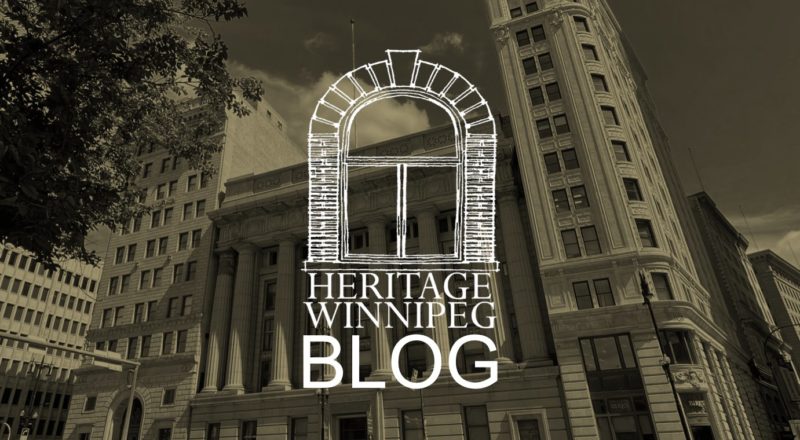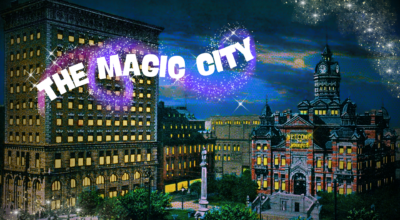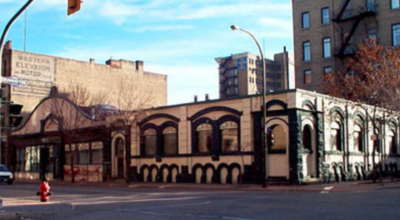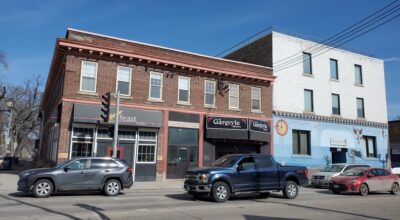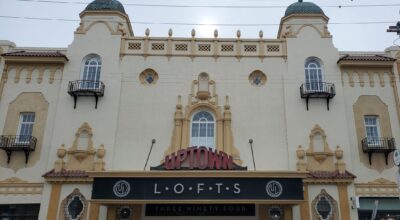
/ Blog
September 16, 2015
Two Winnipeg Carnegie Libraries: Cornish and St. John’s
Libraries are pillars in their communities, places where to spend hours browsing for a books, learning something new in the resources section, doing homework on the public computers, or participating in exciting programs. There are three libraries in Winnipeg that have been part of their communities for over a hundred years. One of these is the Carnegie Library at 380 William Avenue, touched on in the previous blog post: Free and Open to All: A History of Winnipeg’s Libraries.
Only two years after the Carnegie Library opened, the question of branch libraries was raised. James H. McCarthy, the City’s first librarian, championed the creation of small depositories in drug stores, schools, and other centres with collections of approximately 500 books rotated every two to three weeks. Losses were heavy from these depositories and even with 35 of them by 1914, the need for branch libraries remained.
Thus, by 1913, the city approached the Carnegie Corporation once again for two more libraries. City-owned land was selected for the buildings – one at the north end at the corner of Machray Avenue and Salter Street, and the other in Cornish Park at the west entrance to Armstrong’s Point. Cornish Park, named after Winnipeg’s first mayor, Francis Evans Cornish, was the previous home of Winnipeg Waterworks, and came to be the home of both the Cornish Public Bath and the Cornish Library.
The need for two separate branches, rather than just one, came from the two distinct populations in Winnipeg at the time and the economic division between north and south. At the time, the City of Winnipeg often built public facilities, such as baths, schools and libraries, in pairs to appease both ends of the city and prevent political backlash.
In June of 1915, the St. John’s Library and the Cornish Library opened, in the North End and Armstrong’s Point, respectively. The openings were attended by an orchestra, many local dignitaries, and hundreds of Winnipeg’s citizens.
The St. John’s Library is the slightly smaller of the two and located in the North End, which at the time was a bustling area as the centre of Winnipeg’s immigrant community. Having grown rapidly in the first decade of the 20th century, the North End was in need of civic services including water, sewer, electricity, fire protection, police, modern schools, housing, commercial property, and of course, libraries. The benefit of having a library in the area was tremendous. The people there didn’t know the country, they didn’t know the language, and they were missing their families back home.
Adapting to a new country can take ages but the people who lived there now had a library to help them. Through the use of books, magazines, and journals, people were able to learn the language and acclimatize to their new home more easily and rapidly. Libraries still fill this role in Winnipeg, with many providing free EAL resources to newcomers.
The community was so exited to have a new library, that it opened earlier than planned, and therefore did not have a lot of furniture. The basement was originally to be used as a staff room and a coal room but it ended up as a juvenile section instead. St. John’s circulated more books in the first six months after opening than the Williams and Cornish Library combined, demonstrating its value to the community.
Much like the St. John’s Library, the Cornish Library is cherished in its community. Located just around the corner of the entrance to Armstrong’s Point, the library can be described as a Winnipeg secret.
The Cornish Library has been used by many influential authors and citizens including suffragist, prohibitionist, and novelist Nellie McClung, who used the basement of the library for some of her lectures.
The Cornish Library hasn’t undergone any major renovations with the exception of repairs to the foundation that were necessary due to damage from the Cornish Baths and a flood in 1918. The damage was repaired with a Carnegie grant of $7000.
In the past, there was often not a lot of funding for libraries and their programs. During one of these funding low points, there was a need for snacks for children’s programming. The solution came from the prison at Stony Mountain, where inmates were learning how to bake. Themed cupcakes soon arrived, accompanied uniformed chef-inmates and their guards. Though unconventional, this story is an excellent example of the ways in which a library can partner with the community to ensure everyone’s needs are met.
The lack of funding has produced a more serious threat though. The city has often suggested closing some of the smaller branches, including the Cornish Library, in the name of saving taxpayer dollars. As recently as 2005, the loyal patrons of the library have been called upon to make sure that this would not happen.
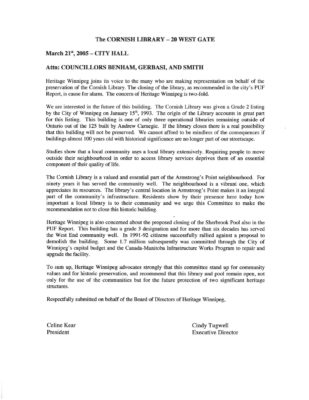
A March 2005 letter from Heritage Winnipeg to City Councillors, in support of the Cornish Library remaining open.
Source: Heritage Winnipeg
Young children and adults alike have written letters to protest the closure and explain how and why the library is so dear to them. Luckily, the city did not close the library and the Cornish Library is still in use today. With plans for a huge renovation, the Cornish Library isn’t going anywhere.
The St. John’s Library and the Cornish Library are both still in use today. Though we celebrated the libraries’ 100th birthdays this year, we are not only celebrating their age but also their vital presence in the city. They are places that not only educate us, but bring us together.

The Friends of Cornish Library are currently selling a historical DVD, The Cornish Library: Living Room of the Community 1915-2015, as a fundraiser for the library and its planned renovations.
SOURCES
City of Winnipeg Historical Report-500 Salter Street-Long
City of Winnipeg Historical Report-20 West Gate-Long
Cornish Library Information
St. John’s Library Information
Winnipeg Free Press – Libraries still the focal point of neighbourhoods
THANK YOU TO THE SPONSOR OF THIS BLOG POST:

Written by Heritage Winnipeg.





